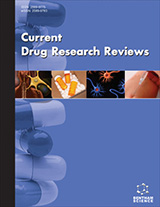Abstract
Objective: This study aimed to select 16 medicinal plants based on their folklore remedy for treating various diseases like inflammation, cancer, etc., and scientifically validate their potency.
Methods: Five among them, namely Centella asiatica (CA), Myristica fragrans (MF), Trichosanthes palmata (TP), Woodfordia fruticosa (WF), and Curculigo orchioides (CO), were scientifically confirmed through the extraction and in-vitro cytotoxic and hepatoprotective evaluation. Based on the cytotoxic and hepatoprotective results, the various fractions of CO were chosen for an in-depth phytochemical study to isolate and characterize active compounds by GC-MS.
Results: The results showed promising cytotoxic activity (i.e., IC50=<100 μg/ml) against HeLa cell lines and significant hepatoprotective activity in a dose-dependent manner on CCl4 intoxicated isolated hepatocyte cells.
Conclusion: The present study confirmed the scientific evidence regarding the effectiveness of selected medicinal plants in HeLa and hepatocyte cells. Furthermore, a detailed study on their mechanism of action and clinical application is suggested.
Keywords: Medicinal plants, HeLa cell lines, cytotoxicity, MTT assay, hepatoprotective, hepatocytes, GC-MS.
[http://dx.doi.org/10.1002/pds.1014]
[http://dx.doi.org/10.2174/1871525718666200702125558] [PMID: 32614755]
[http://dx.doi.org/10.3390/molecules21050559] [PMID: 27136524]
[http://dx.doi.org/10.3390/metabo9110258] [PMID: 31683833]
[http://dx.doi.org/10.1016/j.joim.2019.04.008] [PMID: 31076374]
[http://dx.doi.org/10.1002/jsfa.8472] [PMID: 28585285]
[http://dx.doi.org/10.1089/acm.2012.0275] [PMID: 23829812]
[http://dx.doi.org/10.3390/biom9110731] [PMID: 31726801]
[http://dx.doi.org/10.3390/molecules23030576] [PMID: 29510531]
[http://dx.doi.org/10.1016/j.envpol.2019.05.054] [PMID: 31108288]
[http://dx.doi.org/10.3390/antiox4010185] [PMID: 26785345]
[http://dx.doi.org/10.12980/APJTB.4.2014C1069] [PMID: 25183095]
[http://dx.doi.org/10.3390/plants9040411] [PMID: 32224997]
[http://dx.doi.org/10.4103/ijmr.IJMR_959_16] [PMID: 29664038]
[http://dx.doi.org/10.1515/jcim-2015-0110] [PMID: 27310002]
[http://dx.doi.org/10.1016/j.jep.2019.111934] [PMID: 31129308]
[http://dx.doi.org/10.4103/0975-9476.146540] [PMID: 26166997]
[http://dx.doi.org/10.4103/0250-474X.78519] [PMID: 21694984]
[http://dx.doi.org/10.1016/j.jep.2013.03.066] [PMID: 23562803]
[http://dx.doi.org/10.31557/APJCP.2021.22.3.785] [PMID: 33773542]
[http://dx.doi.org/10.1155/2014/842674] [PMID: 25162032]
[http://dx.doi.org/10.4103/phrev.phrev_31_16] [PMID: 28989249]
[http://dx.doi.org/10.1155/2013/712092] [PMID: 23841105]
[http://dx.doi.org/10.4103/0973-7847.95886] [PMID: 22654406]
[http://dx.doi.org/10.3390/molecules20045740] [PMID: 25834987]
[http://dx.doi.org/10.3109/13880209.2010.550057] [PMID: 21501038]
[http://dx.doi.org/10.1016/j.fct.2011.04.010] [PMID: 21514353]
[http://dx.doi.org/10.1007/s11101-016-9469-x] [PMID: 28082856]
[http://dx.doi.org/10.3109/13880200903241861] [PMID: 20645741]
[http://dx.doi.org/10.1016/j.phymed.2015.05.059] [PMID: 26220630]
[http://dx.doi.org/10.1186/s12906-015-0771-8] [PMID: 26238515]
[http://dx.doi.org/10.1016/j.cbi.2010.09.029] [PMID: 20932957]
[http://dx.doi.org/10.1016/j.jpba.2013.03.007] [PMID: 23591140]
[PMID: 20150617]
[http://dx.doi.org/10.1186/1472-6882-10-42] [PMID: 20684795]
[http://dx.doi.org/10.1159/000064549] [PMID: 12218354]
[http://dx.doi.org/10.1016/0378-8741(95)01254-B] [PMID: 7500638]
[http://dx.doi.org/10.1016/0006-2952(74)90420-1] [PMID: 4813346]
[http://dx.doi.org/10.3109/01480547809034433] [PMID: 755666]
[http://dx.doi.org/10.1016/j.cbi.2009.06.014] [PMID: 19576190]
[http://dx.doi.org/10.1111/j.1572-0241.1998.00139.x] [PMID: 9468229]
[http://dx.doi.org/10.1155/2019/5381692] [PMID: 31929855]
[http://dx.doi.org/10.1155/2015/161720] [PMID: 25694787]




























